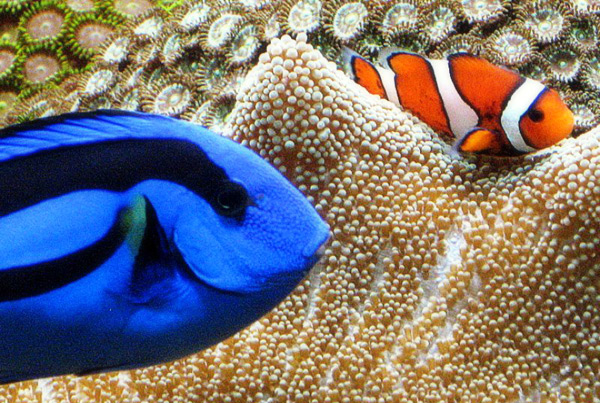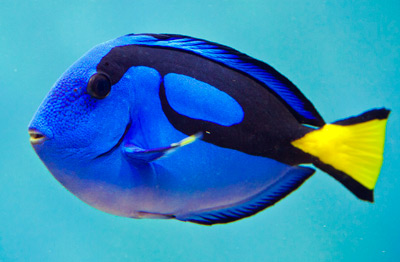Well, the word is out that Finding Dory, the long-anticipated sequel to Disney/Pixar’s Finding Nemo, is finally slated for release in June of 2016. If the impact of the sequel is anything like that of the original—a lot of youngsters clamoring to keep the film’s “star” as a pet—then I suspect that beginning next summer, the Pacific blue tang (Paracanthurus hepatus), the species that Dory represents, will be very popular indeed.
I have to admit I’m conflicted about the pending release of this film. On the one hand, if Finding Dory holds up to the quality of the original in terms of animation and entertainment value, it will be well worth viewing. Jaded as I am by decades in the hobby and having spent plenty of time on real coral reefs thanks to the miracle of scuba, I still find the visually lavish representation of the ocean realm in Finding Nemo quite compelling. Plus, anything that sparks kids’ interest in marine life has to be a good thing, right?
On the other hand, a burgeoning interest among youngsters in keeping P. hepatus in a home aquarium probably doesn’t bode well for the species. Sure, it was troubling when every other child wanted to keep his or her own Nemo, but at least Amphiprion ocellaris is a rugged little fish (especially if captive-bred) and generally suited to life in relatively small aquariums. With a certain degree of adult oversight, it’s possible for a child to keep one alive, though the circumstances would probably be less than ideal.
The same cannot be said for Dory. P. hepatus has a much more delicate constitution than A. ocellaris, is rather disease-prone, and demands a very large and mature tank, near-pristine water quality, and vigorous circulation. In other words, Dory is a very poor choice for a child’s first saltwater tank. Specimens purchased for kids on a whim are virtually assured an untimely death.

So, if Dory does ignite kids’ interest in owning Pacific blue tangs the same way Nemo did with common clowns, is there anything conscientious hobbyists can do to help limit the number of specimens acquired on impulse by parents who might not know any better?
We can always start with family members and friends who know about our involvement in the hobby. If they should seek our input before making such a purchase for their child, we can offer helpful advice on the challenges of marine aquarium keeping in general and of keeping P. hepatus in particular, thus (hopefully) dissuading this ill-considered venture.
Another place where we might have a certain degree of influence in this regard is at our local fish store. For example, we can encourage dealers who sell P. hepatus to post signage detailing its somewhat demanding care and housing requirements and indicating that, despite Dory’s charm, this species is not a good choice for a kid’s tank.
Of course, if our own kids are clamoring for a “Dory fish,” we may be in a position to acquire a specimen if we have or are willing to set up a suitable system. Otherwise, we can use this as a “teachable moment” and explain to our budding hobbyists that sometimes it’s in the best interest of the marine animals we love to leave them in the ocean.



